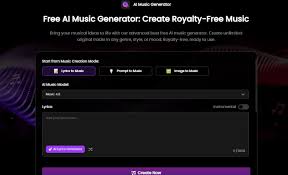Introduction
Game music plays a crucial role in immersion, storytelling, and emotional engagement. But how should developers and composers create it? The rise of AI-generated music has sparked a debate: Should you use AI tools or stick with traditional composition methods?
In this guide, we’ll compare AI-generated music and traditional composition, exploring the pros, cons, and best use cases for each approach.
Traditional Game Music Production: The Classic Approach
How It Works
Traditional game music is composed by professional musicians using:
Digital Audio Workstations (DAWs) like FL Studio, Logic Pro, or Cubase
Live recordings with orchestras or session musicians
MIDI programming for synthesized instruments
Advantages
? Unique, Expressive Sound – Human composers bring emotion and creativity that AI can’t fully replicate.
? Customization – Every note is intentionally crafted to fit the game’s narrative and pacing.
? Dynamic Scoring – Composers can manually adjust music to match gameplay (e.g., adaptive layers in The Legend of Zelda or Halo).
Disadvantages
? Time-Consuming – Composing, recording, and mixing can take weeks or months.
? Expensive – Hiring composers, musicians, and studios adds to development costs.
? Limited Iteration – Making changes late in production can be difficult.
Best For: AAA studios, narrative-driven games, and projects with high budgets.
AI-Generated Game Music: The Modern Alternative
How It Works
AI music tools (like AIVA, Soundraw, and Mubert) use machine learning to:
Generate original tracks based on mood, genre, or reference songs
Adapt music dynamically in response to in-game events
Provide royalty-free compositions without licensing hassles
Advantages
? Fast & Efficient – Generate full soundtracks in minutes instead of months.
? Cost-Effective – No need to hire composers or session musicians.
? Endless Variations – AI can produce multiple versions of a theme for experimentation.
? Dynamic Adaptation – Some tools integrate with game engines for real-time music shifts.
Disadvantages
? Less Emotional Depth – AI lacks the nuanced creativity of human composers.
? Generic Output – Some tracks may sound repetitive or lack uniqueness.
? Limited Control – Fine-tuning may still require manual editing.
Best For: Indie developers, mobile games, and projects with tight deadlines or budgets.
AI vs Traditional: Which Should You Choose?
| Factor | Traditional Music | AI-Generated Music |
|---|---|---|
| Cost | High (10,000s) | Low (Free - $100s/month) |
| Time Required | Weeks to months | Minutes to hours |
| Customization | Fully bespoke | Limited by AI model |
| Emotional Impact | High (human touch) | Variable (can feel generic) |
| Best For | AAA games, cinematic experiences | Indie games, prototypes, dynamic soundtracks |
Hybrid Approach: The Best of Both Worlds?
Some developers combine AI and traditional methods:
Use AI for prototyping before hiring a composer.
Enhance AI tracks with live instruments for a richer sound.
Employ AI for adaptive layers while keeping main themes human-composed.
The Future of Game Music Production
AI-assisted composition will become more sophisticated, bridging the gap between automation and human creativity.
Real-time generative music will enhance immersion in open-world and VR games.
Collaborative AI tools will help composers work faster without sacrificing originality.
Conclusion: Which Method Wins?
There’s no one-size-fits-all answer—the best approach depends on your game’s needs, budget, and creative vision.
Choose traditional music for high-budget, story-driven games where emotional depth is critical.
Use AI-generated music for indie projects, fast iterations, or adaptive soundtracks.
Consider a hybrid approach to balance efficiency and artistic control.
What’s your preferred method for game music? Let us know in the comments!









